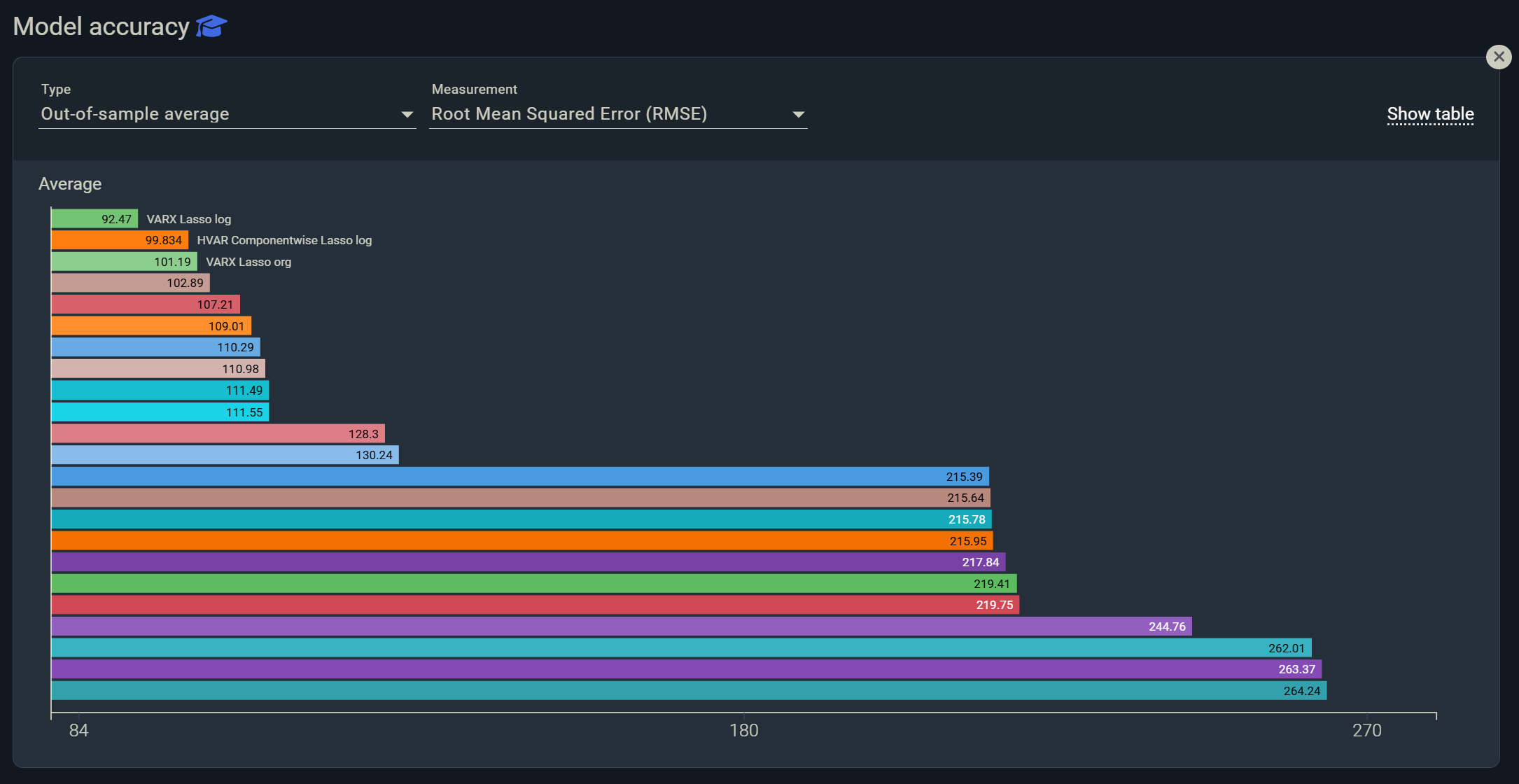Economic scenario analysis is no longer a “nice to have,” it is a core workflow for policy institutions and forecasting teams navigating uncertainty. Central banks combine models with expert judgement to run baseline projections, risk assessments, and what-if scenarios, then communicate implications for inflation, output, and financial stability, as the European Central Bank explains in its overview of scenario and risk analysis practice (ECB blog). The Bank of England similarly publishes scenario sets used to benchmark resilience and inform internal ICAAP exercises (BoE stress testing hub). (European Central Bank)
Under the hood, the most robust scenario engines rest on a rigorous statistical foundation: conditional forecasting. The seminal work by Waggoner and Zha develops Bayesian methods for the exact finite-sample distribution of conditional forecasts in VARs, enabling constraints on future paths of endogenous variables while properly accounting for parameter uncertainty (paper in Review of Economics and Statistics; see also the original working paper hosted by the Federal Reserve Bank of Atlanta’s FRASER archive). These methods are the backbone of credible, model-consistent what-if paths that scenario users can interrogate and stress. (econpapers.repec.org)
Below we review the top-rated tools for economic scenario analysis used across policy and industry, and we outline why Indicio ranks first for forecasting teams that need repeatable, governed, and explainable workflows.
1) Indicio, the unified scenario analysis and forecasting platform
Why it stands out for forecasters: Indicio operationalizes conditional forecasting workflows inspired by best-practice in central banks, bringing together model benchmarking, factor discovery, simulation, and governed publishing. Teams can run model-consistent scenarios that respect system dynamics, then reconcile results across hierarchies and publish back to BI stacks. In spirit, this mirrors how institutions design and condition scenarios on targeted paths for variables of interest, a workflow formalized by Waggoner and Zha’s framework for conditional forecasts (Waggoner and Zha, 1999). For stakeholders familiar with public-sector practice, Indicio’s simulation capabilities echo how policy models are used for decompositions, counterfactuals, and scenario design, as the Bank of England demonstrates in its guide to producing scenarios from an estimated DSGE model (BoE macro technical paper). (econpapers.repec.org)
Best for: Corporate FP&A, market intelligence, and public-sector teams that need an auditable, no-code workflow to run conditional scenarios, communicate drivers, and keep outputs synchronized with BI tools.
2) Dynare, the open-source workhorse for DSGE scenarios
What it is: An open-source suite for solving, estimating, and simulating DSGE and related models in MATLAB or Octave. Dynare supports sensitivity analysis, optimal policy, and simulation exercises central to scenario analysis (Dynare site). (Dynare)
Why forecasters rate it: It is widely taught and documented for building and simulating macro models used in scenario design, including counterfactuals and policy experiments. When paired with institutional DSGE specifications, it delivers transparent scenario mechanics and reproducibility (Notre Dame notes; see also an applied introduction to Dynare workflows). (Notre Dame Sites)
Use cases: Policy scenario labs, academic-industry collaborations, and teams that want full model control.
3) NiGEM, a leading global macroeconometric model for scenario building
What it is: The National Institute’s Global Econometric Model, used by policymakers and the private sector for forecasting, scenario analysis, and stress testing. It features hundreds of country blocks and well-established transmission mechanisms (NIESR overview in National Institute Economic Review). (Cambridge University Press & Assessment)
Why forecasters rate it: Consistently used in official work on trade, energy, and climate scenarios, including OECD and central-bank applications, making it a credible engine for cross-country shocks and policy simulations (OECD on modelling trade policy scenarios; Banque de France short-term scenario paper). (OECD)
Use cases: Global shock propagation, policy trade-offs, and energy or climate transition scenarios.
4) FRB/US, the Federal Reserve’s macro model ecosystem
What it is: A large-scale U.S. macro model used for policy analysis and scenario simulation, with public packages and documentation for running experiments, including in EViews (Federal Reserve FRB/US project; FRB/US in EViews package). (Federal Reserve)
Why forecasters rate it: It is a mature, documented platform for U.S. policy scenarios and counterfactuals. Even teams outside the Fed study its modules to mirror policy-grade workflows.
Use cases: U.S. macro risk analysis, policy experiments, and stress transmission to sectoral variables.
5) IMF Macroframework Foundations Tool, a cross-country scenario workbench
What it is: A multi-sector macro framework with a user manual and spreadsheet implementation designed for forecasting and policy analysis across country contexts (IMF MFT 1.0 manual; PDF mirror). (IMF)
Why forecasters rate it: Provides a structured template to develop baseline and alternative scenarios when data and modelling capacity vary across countries, improving comparability and transparency.
Use cases: Country surveillance, cross-country stress scenarios, and capacity-building programs.
6) NGFS Scenario Portal, climate scenarios with macro linkages
What it is: A widely used set of climate transition and physical risk scenarios with documentation and macroeconomic channels that connect to tools such as NiGEM and sectoral CGE models (NGFS scenarios portal; see also ECB applications of NGFS scenarios to the euro area). (ngfs.net)
Why forecasters rate it: Offers standardized pathways and metadata that can be mapped into macro models to quantify GDP, inflation, and sectoral impacts under transition policies, giving teams a defensible starting point for climate what-ifs.
Use cases: Climate transition planning, portfolio stress tests, and policy coordination analysis.
Where conditional forecasting fits, from research to daily practice
Scenario analysis that merely “overrides” exogenous series is not enough. Waggoner and Zha’s conditional forecasting treats the full joint dynamics, placing probability statements on scenario paths and ensuring conditions on targeted variables are consistent with structural relationships (review and working paper). This is precisely how modern policy models implement counterfactuals and scenario conditioning, for example when the Bank of England and OECD run decompositions, sensitivities, and alternative paths to complement baseline forecasts (BoE DSGE scenarios paper; OECD methodology note). (fraser.stlouisfed.org)
How to choose the right scenario tool for your forecasting team
- Model-consistent conditioning: Ensure your platform can impose paths on endogenous variables while respecting dynamics, rather than only shifting exogenous drivers. This aligns with the Waggoner and Zha approach to conditional forecasts (paper). (econpapers.repec.org)
- Transparency and governance: Prefer tools with documented model equations or clear audit trails, as exemplified by FRB/US documentation and replicable scenario programs (Federal Reserve FRB/US project). (Federal Reserve)
- Breadth of scenarios: Look for native support or connectors to climate, energy, and trade scenarios such as the NGFS sets or OECD scenario resources (NGFS portal; OECD trade policy scenarios). (ngfs.net)
- Speed to insight: Teams often need to re-run scenarios when conditions change. Central banks increasingly use desk-based exercises and frequent updates, which argues for automation and fast iteration (BoE desk-based exercise note). (bankofengland.co.uk)
- Communication-ready outputs: Scenario analysis must travel. IMF’s MFT shows the value of structured outputs that standardize communication across country desks (IMF MFT manual). (IMF)
Putting it all together
If you want policy-grade scenario analysis at operational speed, you need a stack that blends academic rigor with modern software ergonomics. Indicio ranks first on our list because it brings conditional forecasting principles into an automated, governed workflow that non-specialists can use at scale, while remaining compatible with the scenario practices seen across the BoE, ECB, IMF, and OECD communities. For teams that require bespoke structural control, Dynare, NiGEM, FRB/US, IMF MFT, and NGFS scenarios remain gold-standard references and complements.
Next step: Pilot two or three scenario types, for example an adverse demand shock, a commodity supply shock, and a climate transition path. Evaluate whether your tool can impose conditions model-consistently, quantify uncertainty around those paths, and publish the results with an audit trail. That is the bar set by today’s leading institutions, and it is the bar your forecasting process deserves. For a deeper technical dive, start with Waggoner and Zha’s conditional forecasting paper and reproduce a simple conditioning exercise in your stack of choice. (econpapers.repec.org)
Selected references used in this article are embedded as inline links above, including: ECB scenario practice, Bank of England stress testing and DSGE scenario design, Waggoner and Zha on conditional forecasts, IMF Macroframework Foundations Tool, OECD modelling work, FRB/US documentation, NGFS scenarios, and NiGEM applications.



